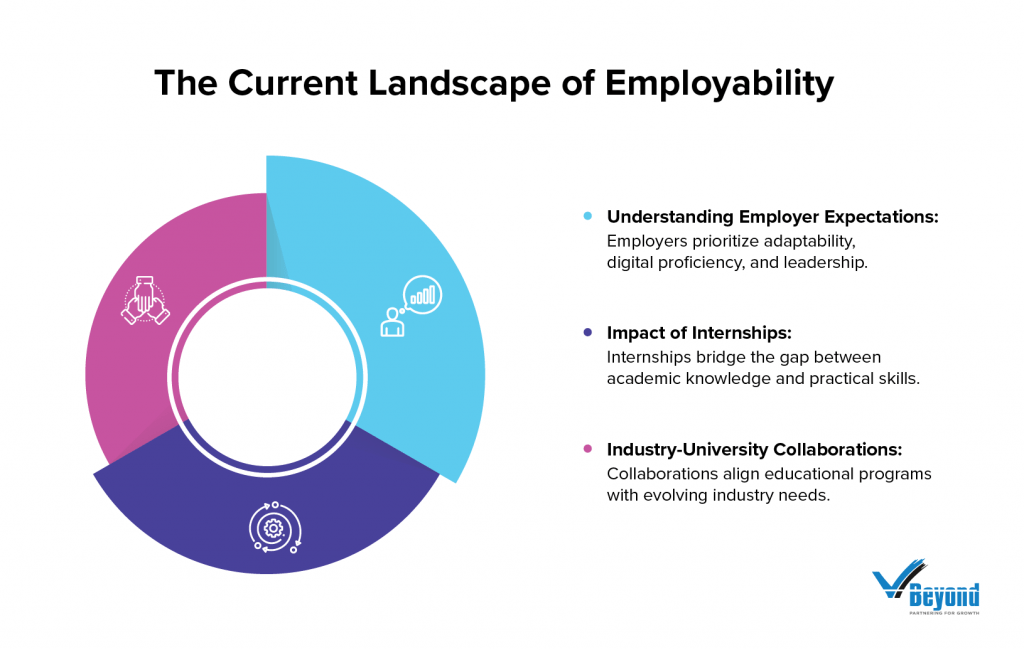Introduction
“Have you ever wondered if your institution is inadvertently setting up students for failure in the real world?”
The gap between academic knowledge and practical skills is becoming increasingly evident in the job market, underscoring the importance of integrating real-world applications into educational frameworks. As industries advance rapidly, the demand for graduates who are not only educated but also employable has never been higher. Traditional educational frameworks, while foundational, often fall short in preparing students for the real-world challenges they will face upon entering the workforce.
Internships and industry partnerships emerge as pivotal elements in this equation. They serve as vital bridges connecting academic learning with practical application, ensuring that students are not just theoretically proficient but also “industry-ready.”
This blog delves into the impact of internships and industry collaborations in enhancing student employability. By examining how these elements contribute to shaping the future of education, we can better understand their importance in preparing students for successful careers.
Student Employability through Internships and Industry Collaborations: India and Global Perspectives
Localized Insights Take Center Stage: VBeyond Corporation’s Survey
VBeyond Corporation’s survey, titled The State of Campus Recruitment 2024: Insights and Strategies for Aligning Higher Education with Industry Demands, focuses on the evolving dynamics in Indian business schools. This comprehensive study reveals that 60% of surveyed institutions have reported increased placement volumes, showcasing successful curriculum alignments with real-world industry needs. Moreover, students engaged in internships are 50% more likely to secure full-time employment upon graduation, emphasizing the effectiveness of practical experiences in boosting employability.
Despite these encouraging trends, the survey also highlights significant challenges. A staggering 70% of employers have noted a prominent skills gap, indicating a disconnect between academic programs and industry expectations. Additionally, only 40% of graduates feel fully prepared for their professional roles, pinpointing crucial areas for educational enhancements.
Supporting Global Trends
While the VBeyond Corporation survey provides vital localized insights, it also supports broader global trends identified in Global Employability University Ranking and Survey (GEURS) 2023-24. This global survey emphasizes the increasing demand for graduates equipped with social impact capabilities, leadership skills, and digital fluency. Institutions like Caltech and MIT are noted for leading these areas, mirroring the advancements seen across BRICS nations, particularly in China and India.
Synthesis of Insights
Both the VBeyond and global data paint a consistent picture: the paramount importance of industry-relevant skills in today’s job market. Employers globally value practical experience, leadership qualities, and a readiness to contribute meaningfully in professional settings. By harnessing robust internship programs and deepening university-industry partnerships, educational institutions can significantly enhance their students’ employability. The progress evident in institutions that prioritize these practical engagements underscores the critical need for ongoing adaptation of educational programs to meet the demands of a rapidly evolving job market.
The Current Landscape of Employability
1. Understanding Employer Expectations
In the current job market, characterized by rapid technological advancements and global interconnectedness, employers are seeking graduates who exhibit adaptability, learning agility, strategic problem-solving, cross-functional digital proficiency, and collaborative leadership. These attributes go beyond basic academic credentials, emphasizing a candidate’s ability to quickly learn and apply new skills, approach problems strategically, integrate digital tools across business functions, and lead diverse teams. For instance, in the tech industry, the ability to learn new programming languages as they emerge is more valuable than familiarity with a single language, highlighting the importance of continuous learning and adaptability.
Internships and industry collaborations are essential for developing these competencies, providing students with opportunities to apply theoretical knowledge in real-world settings, cultivate professional skills, gain industry-specific insights, and build professional networks. These experiences help students bridge the gap between academia and industry, making them more valuable to employers. Practical experiences like internships allow students to test and refine their skills, stay updated with industry trends, and establish connections that can lead to mentorship and job offers. By aligning educational programs with these industry demands, institutions can ensure their graduates are equipped with the practical skills and insights necessary to thrive in a competitive job market.
2. Impact of Internships and Real-World Examples
Given their significance, internships not only enhance employability but also provide students with crucial industry insights and networking opportunities, serving as a bridge to full-time employment. These internships are often the first step in comprehensive workforce training initiatives that provide ongoing professional development, ensuring that the transition from academic to professional environments is seamless and effective.
VBeyond Corporation’s survey underscores the significant role internships play in enhancing student employability. The findings indicate that students who participate in internship programs greatly improve their chances of securing full-time employment, often at competitive salary levels. Moreover, the survey reveals that companies highly value the practical experience these internships provide, with a substantial number of employers inclined to extend full-time job offers to interns. This trend not only benefits students by increasing their job readiness but also serves employers by reducing recruitment costs and identifying talent early in their careers.
Staffing services play a critical role in translating internship experiences into career opportunities, offering tailored support to help students navigate the complexities of job markets and secure meaningful employment. Talent acquisition strategies are becoming increasingly sophisticated, with companies seeking to identify potential hires early in their educational journey through proactive engagement in internship programs and university collaborations.
Internships play a pivotal role in bridging the gap between academic theory and industry application, equipping students with essential skills and experiences. VBeyond Corporation’s survey highlights the substantial impact of such programs, with a significant focus on how these opportunities prepare students for the competitive job market by offering them hands-on experiences in their fields of study. The survey underscores that institutions with proactive internship programs often report higher placement rates due to their alignment with industry demands.
A notable example of such an internship program is Google’s, known for its rigorous selection process and impactful projects that not only enhance technical skills but also foster leadership and teamwork. This approach aligns well with the findings from the VBeyond survey, which emphasize the necessity of integrating practical skills within academic settings to meet industry needs effectively.
“The strategic adoption of industry collaboration as a practice in our institutions ensures that our graduates are not only academically equipped but also primed for real-world challenges,” notes a Senior Academic Advisor from a leading Indian business school. This sentiment reflects the survey’s broader implications that successful internship programs are crucial for preparing industry-ready graduates.
By concentrating on significant internship outcomes and leveraging insights from the VBeyond survey, educational institutions can better structure their programs to enhance student employability and meet evolving industry requirements.
3. Shaping the Future of Education: The Transformative Power of Industry-University Collaborations
Industry partnerships and university collaborations are pivotal in aligning academic frameworks with the dynamic requirements of the global job market. Alliances enrich the educational experience by integrating real-world applications and challenges into the academic curriculum, thereby innovating the interaction between industries and academia. The integration not only addresses current industry needs but also equips students with the foresight and skills to tackle emerging global challenges. (Of course, advanced recruitment solutions are essential for aligning educational outputs with industry demands, ensuring that the curriculum not only meets academic standards but also fulfills the evolving needs of the job market.)
Anticipating and Shaping Future Skills
Rather than merely responding to current needs, the most effective university-industry collaborations proactively anticipate and cultivate skills for future challenges. This forward-thinking approach includes:
- Advanced Robotics and Automation: Engagements that prepare students for anticipated shifts in sectors like manufacturing and healthcare through joint research facilities and hands-on project work.
- Sustainability and Green Technologies: Initiatives that align with the growing industry commitment to sustainability, offering programs focused on renewable energy solutions and sustainable development to prepare students as pioneers in green technology.
Creating Customized Educational Pathways
To closely align academic learning with industry demands, collaborations can create tailored educational tracks that offer:
- Embedded Industry Professionals: Integrating industry professionals more deeply into the academic process through co-teaching arrangements, providing students with consistent exposure to real-world challenges and solutions.
- Living Labs: Establishing on-campus facilities where companies test new technologies or strategies, actively involving students in innovative projects and solutions testing, thereby creating a dynamic learning environment.
Mutual Benefits from Real-Time Data Exchange
Collaborations can enhance educational agility through shared data and analytics, leading to:
- Data-Driven Curriculum Adjustments: Using real-time industry data to continuously adapt and enhance academic programs to stay ahead of emerging trends.
- Predictive Analytics for Talent Development: Leveraging strategic insights from industry partners to forecast and prepare for future skill demands, potentially leading to the development of new courses tailored to upcoming industry changes.
Establishing Long-term Strategic Alliances
Building long-term partnerships can deepen the integration of industry and academia by:
- Co-developing Degrees and Certifications: Creating specialized academic programs that incorporate industry-recognized qualifications, ensuring students graduate with both academic and professional credentials.
- Global Exchange Programs: Facilitating student experiences across diverse cultural and regulatory environments to prepare them for international careers, enhancing their global understanding and adaptability.
Illustrative Examples of Transformative Industry-University Collaborations
The VBeyond Corporation survey underscores the significant impact of industry-university collaborations on enhancing student employability and aligning curricula with industry demands. These partnerships are pivotal in equipping students with practical skills that meet the dynamic needs of the workforce.
An essential highlight from the survey is the integration of industry-driven projects into academic settings, which allows students to tackle real-world challenges and apply their theoretical knowledge practically. This strategy not only enriches the learning experience but also enhances graduates’ readiness for professional roles, making them more attractive to potential employers.
Furthermore, the survey emphasizes the need for educational institutions to strategically adopt industry collaboration practices. It states, “The strategic adoption of industry collaboration as a practice ensures that our graduates are not only academically equipped but also primed for real-world challenges.” This approach bridges the gap between academic learning and practical industry requirements, thus preparing students for transformative roles in their fields.
These collaborative efforts underscore the importance of aligning academic frameworks with industry needs, ensuring education not only meets academic standards but also adapts to the evolving demands of the job market, enhancing both the quality of education and graduate employability.
Internationally, transformative collaborations between academia and industry are setting benchmarks for integrating educational curricula with practical industry demands. A few notable examples include MIT’s Leaders for Global Operations program, wherein companies like Boeing and Amazon partner with the institution to prepare students for roles in manufacturing and operations; Georgia Tech’s collaboration with AT&T and Udacity, offering a pioneering online Master of Science in Computer Science; and Stanford University’s partnership with Google to enhance data analytics education. These partnerships exemplify how global educational institutions are leveraging industry expertise to equip students with the necessary skills to thrive in diverse sectors.
According to the AMA, collaborations serve as powerful examples of how integrating academic rigor with industry expertise can accelerate technological advancements and increase product marketability.

Conclusion
In conclusion, university and industry collaborations serve a multifaceted role. They not only elevate educational standards and foster innovation but also directly tackle real-world challenges, ensuring that students are adeptly prepared for the dynamic global job market. Such collaborations extend beyond technological and scientific endeavors—they also enrich the marketability and appeal of innovations.
Moving forward, it is crucial for firms to not just engage in but also strategically promote the unique benefits derived from industry partnerships. By doing so, they can fully capitalize on their investments and underscore the pivotal role of academic-industry collaborations in driving both economic growth and educational excellence.
Pursuing a collaborative approach ensures that educational institutions and businesses are well-equipped to navigate future challenges, cultivating a culture of continuous innovation and learning that benefits the society at large.
Ready to bridge the gap between education and employment? Partner with us today to create tailored internship programs and build a future-ready workforce. Contact VBeyond to learn how our staffing and recruitment services can help you cultivate top talent.


